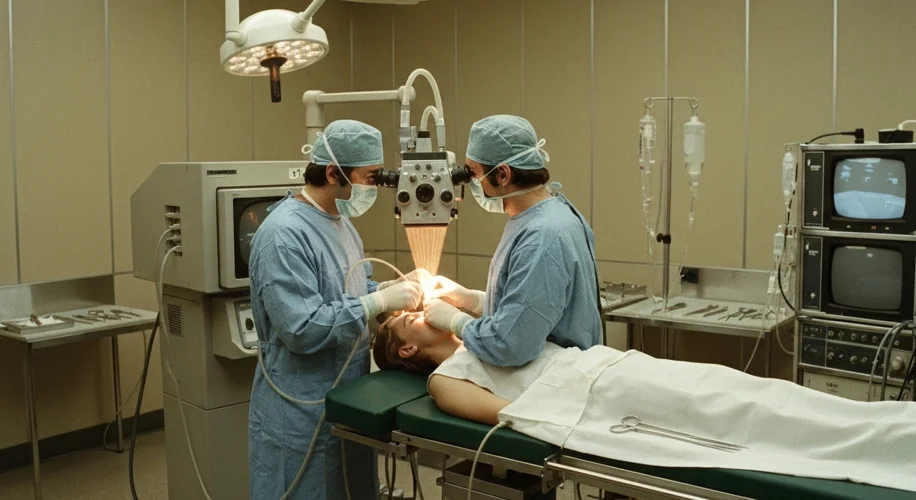Imagine a world shrouded in perpetual fog, where faces blur into indistinct shapes and colors fade to muted grays. For millions, this was the reality of a cataract, a clouding of the eye’s lens that stole the vibrancy of life. Until, that is, a man named Charles Kelman dared to revolutionize its treatment.
Before the 1970s, cataract surgery was a formidable ordeal. The prevailing method, intracapsular cataract extraction, involved removing the entire cloudy lens within its capsule. This often meant using large incisions, significant force, and a lengthy recovery period, frequently complicated by the need for thick, powerful glasses afterward, which offered a distorted, magnified view of the world.
Dr. Charles D. Kelman, an ophthalmologist with a restless, innovative spirit, found this status quo unacceptable. He envisioned a gentler, more efficient way to liberate patients from the gray veil of cataracts. His journey was not one of sudden inspiration, but a relentless pursuit of a better solution, often met with skepticism from a medical establishment comfortable with the tried-and-true.
Kelman’s breakthrough came with the concept of phacoemulsification. Instead of brute force, he proposed using ultrasonic energy to break up the cloudy lens into tiny fragments, which could then be aspirated (vacuumed out) through a much smaller incision. This was a radical departure. Think of it like this: instead of trying to pull a whole, stubborn olive pit out of a fruit, imagine being able to liquefy it and gently suction it away.

The development of the phacoemulsification device was a feat of engineering and persistence. Kelman collaborated with engineers to create a specialized ultrasound needle that could emulsify the cataract while simultaneously irrigating and aspirating the emulsified fragments. The machine hummed with a controlled power, designed to precisely break down the cataractous lens without harming the delicate structures of the eye.
In the early days, introducing this new technique was an uphill battle. Colleagues accustomed to the established methods questioned its safety and efficacy. Kelman faced doubt and resistance, but his conviction, fueled by his desire to improve patient outcomes, never wavered. He meticulously documented his procedures and results, patiently demonstrating the advantages of his approach: smaller incisions, less trauma to the eye, faster recovery, and the potential for improved visual acuity without the distortions of thick cataract glasses.
The impact of Kelman’s innovation, developed in the late 1960s and popularized throughout the 1970s, was nothing short of transformative. Phacoemulsification, coupled with the subsequent development of intraocular lenses (IOLs) that could be implanted into the eye after cataract removal, ushered in a new era of modern cataract surgery. Patients could once again see the world with clarity and natural vision, often within days of the procedure.
This advancement not only restored sight but also dramatically improved the quality of life for millions worldwide. It democratized access to clear vision, making surgery more accessible and less daunting. The tiny incision technique meant that patients could return to their daily lives much sooner, free from the visual impairment that had once held them captive.
Charles Kelman’s legacy is a testament to the power of persistent innovation. He didn’t just invent a new surgical tool; he reimagined an entire medical procedure, driven by empathy and a profound understanding of human need. His work continues to benefit countless individuals, a quiet testament to the man who brought sight back to a world often dimmed by the mist of cataracts.

